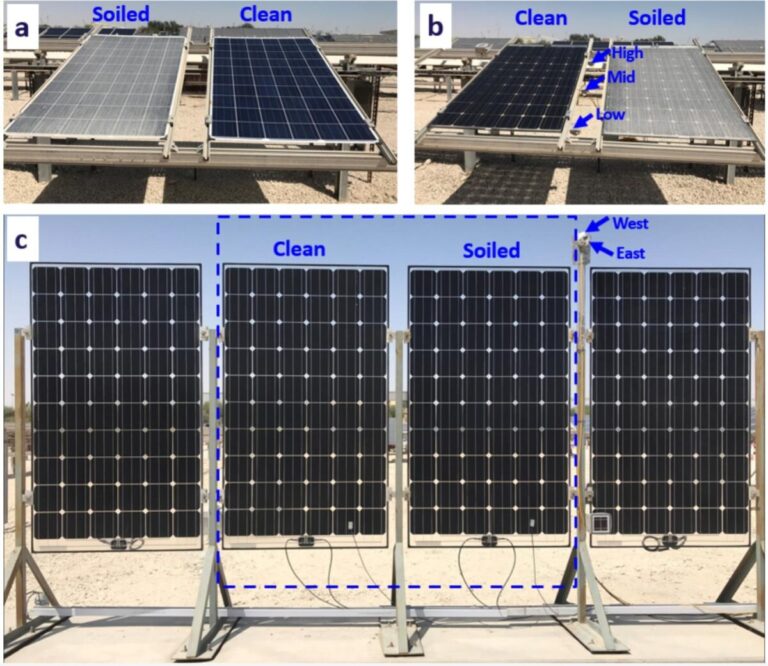New research from Qatar shows that east-west oriented vertical PV installations can significantly help reduce pollution in desert climates. The scientists found that PV energy generation can be up to 9% higher in vertical systems compared to conventional arrays.
Researchers from Hamad Bin Khalifa University (HBKU) in Qatar have investigated the potential of bifacial east-west oriented vertical PV installations for reducing pollution in desert climates and found that these systems can have up to 9.2% higher energy generation compared to conventional arrays. .
In the newspaper “Assessment of vertical east-west bifacial photovoltaic systems in desert environments: energy yield and pollution mitigation”, published in Solar energythe researchers explained that their approach is intended to reduce cleanup costs and levelized energy costs (LCOE) in projects in desert locations. “This research is crucial for optimizing energy production and reducing maintenance costs in arid areas, where the impact of pollution is significant,” they stressed.
The research team conducted a series of tests at the Outdoor Test Facility (OTF) of the Qatar Environment and Energy Research Institute (QEERI) in Doha, Qatar. The experimental setup consisted of four n-type bifacial, 60-cell, 270 W, glass-glass frameless modules. Two of the modules were installed in the conventional latitude configuration, approximately 1.1 m above ground level, while the other two were deployed in the vertical east-west configuration, approximately 0.8 m above ground.
The academics cleaned one module of each configuration each week, while the others were left deliberately contaminated.
The tests showed that the tilted setup received 11.4% higher irradiation than the vertical module from September to March, while the vertical module received 5.2% higher irradiation between April and August. “This pattern is consistent with the seasonal trajectory of the sun in Doha, favoring tilted modules in winter and vertical modules in summer,” the academics noted, noting that the tilted module will be a received approximately 4.5% higher irradiation. then the vertical module.
However, the test also showed that tilted modules experienced fouling losses of up to 60% for monofacial modules and up to 45% for bifacial modules for approximately three years, while the vertical modules experienced “negligible” fouling losses. “In addition, during the summer months, when pollution rates reach the highest values in Qatar, clean vertical double-sided modules showed the ability to generate an average of 3.8% and up to 9.2% more energy than clean tilted double-sided modules,” the researchers pointed out. .
They concluded by noting that vertical PV installations represent a viable alternative to conventional PV systems in desert climates because in these locations “pollution and high temperatures coincide with peak energy demand.”
“Future research will include further investigation into the performance, durability and long-term economic feasibility of larger vertical bifacial PV systems in desert climates and other environments with high pollution rates,” she added.
This content is copyrighted and may not be reused. If you would like to collaborate with us and reuse some of our content, please contact: editors@pv-magazine.com.


